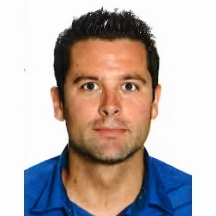Discover New Strategies for Working on Physical Activity: A Healthy and Educational Perspective from a Multidisciplinary Approach
A special issue of International Journal of Environmental Research and Public Health (ISSN 1660-4601). This special issue belongs to the section "Exercise and Health".
Deadline for manuscript submissions: closed (31 January 2024) | Viewed by 6648
Special Issue Editors
Interests: teacher training; physical education; physical activity; education
Special Issues, Collections and Topics in MDPI journals
Interests: physical activity; higher education; health; psychosocial factors; sports; emotional intelligence
Special Issues, Collections and Topics in MDPI journals
Special Issue Information
Dear Colleagues,
New methodologies and strategies for various types of physical activity are the focus of this Special Issue. This is why particular attention should be paid to physical activity and physical exercise in regards to healthy practice, regardless of the population involved. Therefore, it is very important to ensure that guided physical activity takes place in a learning environment, so that all participants are aware of the benefits that can be achieved according to each type of exercise being performed. Accordingly, this Special Issue covers all contexts (sport, school, etc.) in which these two types of variables, health and education, are present.
Multidisciplinary work is especially important, as, nowadays, it is increasingly evident that working in different areas produces better results. This Special Issue welcomes all papers that consider this multidisciplinary point of view from areas analogous to physical activity, such as psychology, physiotherapy, physiology, education, etc.
Prof. Dr. Pedro Valdivia-Moral
Prof. Dr. José Luis Ubago-Jiménez
Guest Editors
Manuscript Submission Information
Manuscripts should be submitted online at www.mdpi.com by registering and logging in to this website. Once you are registered, click here to go to the submission form. Manuscripts can be submitted until the deadline. All submissions that pass pre-check are peer-reviewed. Accepted papers will be published continuously in the journal (as soon as accepted) and will be listed together on the special issue website. Research articles, review articles as well as short communications are invited. For planned papers, a title and short abstract (about 100 words) can be sent to the Editorial Office for announcement on this website.
Submitted manuscripts should not have been published previously, nor be under consideration for publication elsewhere (except conference proceedings papers). All manuscripts are thoroughly refereed through a single-blind peer-review process. A guide for authors and other relevant information for submission of manuscripts is available on the Instructions for Authors page. International Journal of Environmental Research and Public Health is an international peer-reviewed open access monthly journal published by MDPI.
Please visit the Instructions for Authors page before submitting a manuscript. The Article Processing Charge (APC) for publication in this open access journal is 2500 CHF (Swiss Francs). Submitted papers should be well formatted and use good English. Authors may use MDPI's English editing service prior to publication or during author revisions.
Keywords
- physical activity
- multidisciplinary
- health
- education
- new methodologies
- psychosocial factors






